Introduction
Canon recently declared that the EOS-1DX Mark III would be the last flagship DSLR camera that they ever make, as they concentrate even more fully than before on switching their camera and lens ranges over to mirrorless.
Enter stage left the new EOS R3, which despite not inheriting the “1” series denomination is still very clearly the mirrorless equivalent of last years EOS-1DX Mark III, with both very much designed to be the ultimate sports and wildlife, full-frame professional-level camera.
With the 45-megapixel EOS R5 positioned as the company’s high-resolution option, the new Canon R3 instead focuses almost entirely on out-and-out speed.
It features a brand new 24.1 megapixel full-frame stacked back-illuminated CMOS sensor, up from 20 megapixels on the EOS-1DX Mark III, and the very latest DIGIC X image processor.
Burst shooting speeds are rated at 30fps continuous shooting in live view or 12fps with the mechanical shutter and the buffer allows Raw and JPEG bursts of up to 1000 frames.
The native ISO range runs from 100-102400, which can be expanded to ISO 50-204800, and the top shutter speed is 1/64,000sec when using the electronic shutter.
There is up to 8-stops of image stabilisation available via a combination of the camera’s in-body Image Stabiliser which works in tandem with the attached lens’s own stabilisation system.
The brand new Eye control AF feature lets you select focus points or subjects to track simply by looking at them in the electronic viewfinder, whilst subject tracking can recognise people, animals and also now motorsport vehicles when shooting both photo and videos.
The Dual Pixel CMOS AF II system that’s used when shooting video or in Live View features 4779 autofocus points with 1053 automatic positions.
The Canon R3 has a blackout-free 5,760,000-dot electronic viewfinder with 120fps refresh rate and 100 per cent coverage and a vari-angle 8.2cm, 4,200,000-dot touch-screen LCD.
It can record 6K RAW video at 60fps and up to DCI 4K/120p slow-motion video internally to a CFexpress card.
There’s also dual memory card slots (CFexpress and UHS-II SD), built-in Wi-Fi, Bluetooth and GPS, and integrated USB Type-C, mini HDMI, headphone, microphone, N3 remote, and Ethernet ports.
The Canon R3’s magnesium alloy body is both dust- and weather-resistant, just like the EOS-1DX Mark III, with both cameras offering the same level of weather-proofing as each other.
The new Multi-Function Shoe provides data communication and power for new accessories such as the ST-E10 Speedlite Transmitter, DM-E1D Stereo Microphone, and AD-P1 Smartphone Link Adapter, as well as acting as a traditional hotshoe for existing Speedlites and triggers via the AD-E1 Multi-Function Shoe Adapter.
The Canon EOS R3 is priced at £5879 / $5999 body only.
In terms of the R3’s main rivals, they include the Sony A1, Sony A9 II and the Nikon Z9.
We’ve been testing a full-production EOS R3 camera for the last few weeks, paired with the 24-70mm and 70-200mm F2.8 L-series zoom lenses.
So read on for our full Canon R3 review, complete with full-size sample photos and videos for you to download and evaluate.
Ease of Use
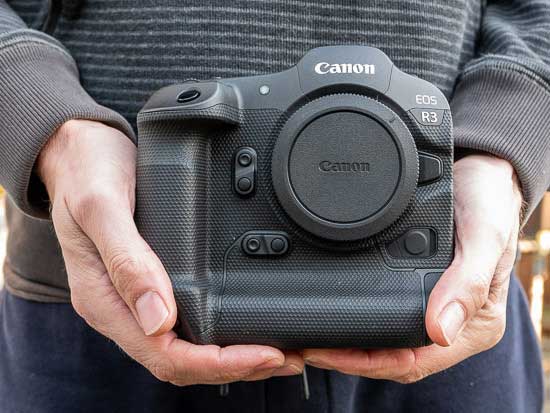 |
Against the continued backdrop of the global Coronavirus pandemic and its knock-on effects on the sporting world, Canon have released not one flagship action camera in the form of 2020’s EOS-1DX Mark III DSLR, but two with the late-2021 unveiling of the EOS R3 mirrorless model.
Both of these models are specifically targeted at sports and wildlife photographers and videographers who prioritise speed of shooting and operation above all else, making the R3 a more niche proposition than, say, the EOS R5.
Viewed side-by-side, it’s immediately clear that the latter owes an awful lot to the former in terms of its overall design, albeit in a significantly smaller and lighter package.
Subsequently the R3 is a lot lighter than the EOS-1DX Mark III, weighing in at 822g body-only or 1015g with both a battery and memory card fitted versus 1250/1440g respectively on the DSLR.
It’s smaller too, measuring 150x 142.6 x 87.2mm versus the 158 x 168 x 83mm dimensions of the EOS-1DX Mark III.
So although both cameras share the same integrated-grip design that’s long been followed by the EOS 1-DX series, the new Canon R3 is smaller, lighter and therefore more usable for longer periods as a result.
Indeed, the fact that it’s virtually the same size and weight as the EOS R5 with a battery grip attached means that you should only discount the R3 if you really want the option of removing some of its bulk.
 |
In practice, I found it just as easy to handle for longer periods of time as any semi- or pro- camera with a battery grip attached, and being completely integrated into the overall design, there’s no unwanted flex or movement that’s inherent to cameras with optional battery grips attached.
Another direct benefit is that the Canon R3 benefits from having a very deep handgrip that comfortably accommodates four fingers, something that can’t be said of some of its main rivals.
At the heart of the EOS R3 is a brand new 24.1 megapixel sensor with, for the first time ever on a Canon camera, a stacked design that has been developed exclusively by Canon.
This allows you to use the R3’s electronic shutter to freeze fast movement without worrying about rolling shutter distortion whilst enjoying a black-out free , 5.76m-dot OLED, 0.76x-magnification electronic viewfinder that refreshes at 120fps, perfect for tracking your subject whilst shooting at up to 30fps.
Sony users have of course enjoyed the benefits of a stacked design for several years now, since the launch of the original Alpha 9 in 2017, so it’s great to see Canon catching up with one of their main rivals.
The magnesium alloy bodied 24.1MP Canon EOS R3 has an overhauled AF system and sensor that offer even better AF tracking performance, image quality and communication capabilities than the 1-DX series.
Starting with the headline-grabbing continuous shooting speeds, that’s certainly true when taking advantage of the silent electronic shutter, which ups the ante from 20fps on the EOS-1DX III to a blistering 30fps on the new EOS R3, complete with full AF and AE tracking.
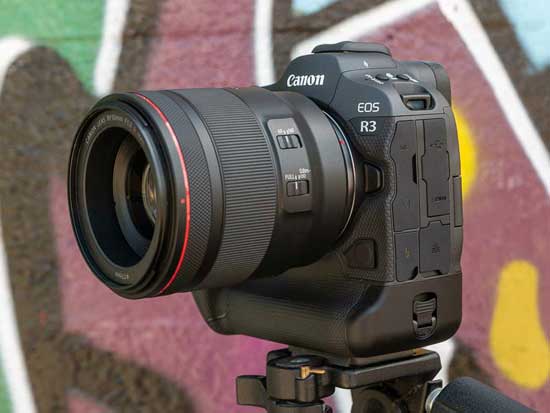 |
The buffer “only” allows Raw and JPEG bursts of up to 540 JPEG or 150 RAW frames when using the electronic shutter, though, which is significantly less than the 1000+ JPEG or 1000 RAW images that is achievable when using the mechanical shutter.
That’s not quite the full story, however, as the EOS R3 can only shoot at 12fps with the mechanical shutter, a much slower rate than both the 30fps electronic mode and the EOS-1DX III’s equivalent 16fps rate.
Still, being able to continuously shoot 5 seconds of 24 megapixel RAW files at 30fps or 18 seconds of full-sized JPEG files at the same rate using a completely silent shutter should certainly please all but the pickiest of customers.
To cope with modern data hungry demands, the camera uses the latest generation CFexpress memory card format, which boasts a write speed over 3x that of the previous swiftest CFast cards.
Unlike the EOS-1DX Mark III, though, the EOS R3 doesn’t just use that media format alone, with the second card slot reserved instead for UHS-II SD cards.
While that greatly expands the choice of memory cards that can be used with this camera, we suspect that the majority of owners would have preferred dual CFexpress slots instead of the mixed approach, as burst shooting speeds are much slower when recording to SD cards.
It’s no use having all of that raw speed at our fingertips however if the camera falls down in other respects. Battery life is, however, fortunately as robust as the camera’s outer shell.
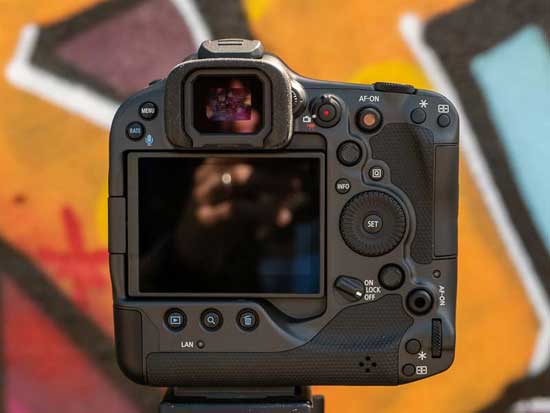 |
With the same rechargeable LP-E19 cell as used by the EOS-1DX Mark III inserted, it’s claimed that 860 shots maximum are achievable from a full charge when using the LCD screen and 620 when using the electronic viewfinder.
Both of these don’t compare all that well with the whopping 2850 battery life offered by the EOS-1DX Mark III, but that is only applicable when using the optical viewfinder.
Even if users are shooting mainly in the EOS R3’s 30fps burst mode, it will still take some time rattle through its battery life, as the quoted CIPA figures are very conservative. Plus you can always pack a spare battery or three if heading out for the day or as back-up when covering a major event.
So the Canon R3 is very quick and robustly manufactured – but what about video? That particular box is ticked via the offering of up to DCI 4K-resolution clips at up to 120fps, with 6K Raw recording also on hand.
Unlike the EOS-1DX Mark III, which was somewhat hampered by the need to focus manually rather than relying on AF when shooting at a faster frame rate than 30fps, the new mirrorless R3 supports full-time AF and AE metering at all available frame rates.
Additionally, whereas the EOS-1DX Mark III only offered digital image stabilisation for both stills and movies, the R3’s incredible in-body five-axis image stabilisation system offers up to 8 stops of compensation when paired with certain RF lenses that also have their own built-in IS.
In-body stabilisation is one of the key benefits of mirrorless versus DSLRs in general and also one of the key reasons to choose the R3 over the EOS-1DX Mark III.
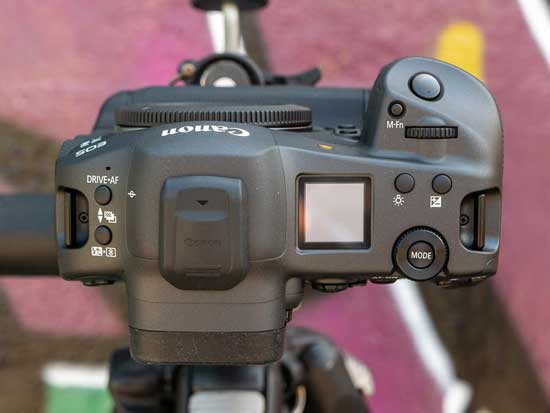 |
It has been designed to work collaboratively with the IS system that’s built into many RF-mount lenses, with the lens and the sensor working together to correct pitch and yaw and the sensor correcting the X-Y and roll movements.
This intelligent stabilisation system provides a frankly incredible 8-stops of stabilisation with some lenses, allowing you to hand-hold the camera for up to 4 seconds and still get critically sharp results.
Even some non-stabilised lenses such as the RF 85mm F1.2L USM or RF 28-70mm F2L USM offer 8 stops of stabilisation when they’re mounted on the EOS R3, thanks to the large 54mm diameter of the of the RF Mount.
The EOS R3 can also stabilise older, non-IS lenses including any EF lens that is mounted on it via the Canon EF-EOS R mount adapter.
The stabilisation system will also work with lenses from other manufacturers – you just need to input the focal length into the camera’s menu system.
In practice, the EOS R3 stabilisation system is excellent, making it possible to hand-hold the camera at previously impossibly slow shutter speeds and still maintain critical sharpness.
The Canon R3 features the next generation Dual Pixel CMOS AF II focusing system. Billed as the world’s fastest AF, the camera is capable of focusing in as little as 0.03 seconds.
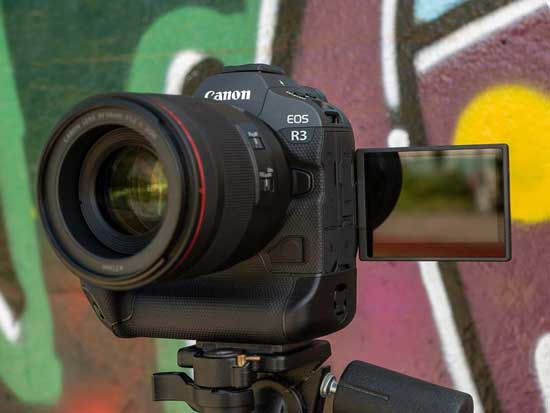 |
It has 4,779 selectable AF points, which is slightly less than the EOS R6 and R5, with the same 100% frame coverage in Auto selection mode and 90% vertical in manual selection.
Impressively the EOS R3 can also focus in light levels as low as -7.5EV (when used with an F1.2 lens), the best of any current Canon mirrorless camera.
Thanks to its Digic X processor, the EOS R3 offers the same deep-learning artificial intelligence based automatic face, eye and animal AF tracking modes as the R5 and R6 models.
The Canon R3 can recognise and track eyes from much further away than previous models, and it works even if the person is wearing a mask, helmet or sunglasses. Subject tracking works for humans and also dogs, cats and birds, the latter even in flight.
Brand new to just the EOS R3 is the ability to track vehicles, including cars and motorbikes. What’s more, if the driver is wearing a helmet, the AF system will lock on to that, ensuring that the most important subject is in focus.
Although we didn’t get the opportunity to attend an actual motorsports race, we did shoot several 30fps sequences of a fast-moving motorbike driver and the EOS R3 instantly and consistently locked onto his helmet and tracked him across the frame, with every single shot in focus. Impressive stuff.
As well as the expansion of recognised subjects, Canon have also further improved their AF system with the introduction of Eye Control autofocus technology.
 |
You can now select an AF point, or a specific subject to track, simply by looking at it! Half-pressing the shutter button then either focuses at the selected AF point or starts continuously tracking the chosen subject.
The camera can be calibrated for different photographers or for the same photographer wearing either spectacles or contact lenses and claibration settings can be saved and even swapped between cameras via a memory card.
Eye Control AF sounds a little gimmicky at first, but in practice it’s both easy to calibrate and easy to use, quickly and seamlessly focusing wherever to look in the frame, with the Set button by default used to toggle it on and off.
The only thing that slows things down a little is the requirement to half-press the shuter release button to effectively confirm the AF point or subject – with some high-speed cases having to do this could make the difference between capturing a very precise moment or missing it.
It would be great if Canon could provide the option to immediately start Servo AF when usinmg Eye Control AF without the half-shutter press being required.
Still, for most use cases Eye Control AF is a genuinely eye-opening addition (excuse the pun) to what is already a superb auto-focus system, and one which we hope and expect Canon will implement in future EOS mirrorless cameras.
For shooting at night or in low light, users get incrementally selectable sensitivity settings running from an expanded ISO 50 to ISO 204,800, selected via the rear command dial, with a familiar LCD window on the top plate detailing the selection made.
 |
That’s an impressively broad selection, especially as images at the boosted settings are still usable, something that couldn’t be said about the EOS-1DX Mark III even faster ISO 409,600 and 819,200 settings, unless you were happy with something that more closely resembled a brass rubbing than a photo as such.
File format wise, the Mark III is also Canon’s latest EOS camera to support the ‘next generation’ HEIF (High Efficiency Image File) file format, enabling images with 10-bits of data to be saved in a file the equivalent size of a JPEG, while suffering less compression.
Of course Raw files can be shot in tandem with JPEGs (or indeed HEIF files) as per usual – here with Canon’s own .CR3 (Canon Raw) file extension, which requires the likes of Photoshop or Lightroom to access and open.
It’s also the latest model to have built-in Wi-Fi (5 GHz and 2.4 GHz)) and Bluetooth 5.0, there is a built-in GPS module which is compatible with GLONASS and QZSS and it also features a 1000BASE-T Ethernet interface and RJ-45 port for a fast and secure hardwired connection.
For video specialists it boasts 6K/60p 12-bit Raw video internal recording to a CFexpress card, making it the first non-cinema Canon EOS camera to offer that feature.
There’s also uncropped 4K DCI and UHD 10-bit recording at frame rates between 24 and 120fps in the MP4 format,, with Canon Log 3 available, both produced by oversampling the sensor’s 6K native output. Slow-motion movies (without sound) can be captured at 120p/100p at 4K and HD resolutions.
All-I, IPB, and IPB Light compression options are available and HDR-PQ recording is supported for even greater highlight and shadow detail.
 |
The R3 supports unlimited recording times with no overheating, allowing up to six hours of normal video or 90 minutes of full HD high frame-rate footage to be captured, and it features mic and headphone ports and a micro-HDMI Type-D port for output to an external recorder.
The EOS-1D X Mark III had several buttons which could be illuminated if its display light button was pressed, allowing for users to better identify functions if working in near dark conditions. Sadly the new EOS R3 doesn’t inherit this useful feature.
Taking the camera out of its box and affixing one of the two lenses that came with our review sample – an RF 24-70mm f/2.8L IS USM and RF 70-200mm f/2.8L IS USM – it’s immediately apparent that this is a large and not particularly discrete camera setup.
The minimalist front plate houses two controls that are additionally mirrored for portrait use. The top one instantly engages the camera’s AF tracking system, and the bottom one is an unmarked Function button that can be customised. By default it activates the classic Depth of Field preview function, which helps you determine what your photos will look like before the image is taken.
There’s also a rubber flap that covers the N3-type socket for a remote switch at the bottom-right corner of the front of the camera, along with a porthole for the AF assist light and a lozenge shaped button for releasing the lens.
What we personally and also immediately missed here, compared to most pro and semi pro cameras, was a large, chunky tactile shooting mode wheel or dial to the left or right of the viewfinder.
Even if the shooting mode can be rapidly – and as it turns out, fairly conveniently – accessed via a press of the Mode button on top of the camera, just like on the EOS R5, we’d still prefer a more traditional dial.
 |
The lack of a familiar shooting mode dial is equally true of all the generations of the EOS-1D X, including the latest Mark III, but to somebody used to handling a wide variety of cameras, its omission initially feels a little odd until you get used to the camera’s operability.
The main advantage of the EOS R3’s approach is being able to quickly see the current camera settings by simply glancing down at the top-plate LCD.
It provides quick and easy viewing access to most of the camera’s key settings, with the dedicated button alongside it toggling between two different screens of information and also allowing it to be lit up in the dark via a longer press – very neat.
The EOS R3 does depart from the blueprint of its DSLR-equivalent by offering a fully articulating, vari-angle LCD screen, whereas the LCD screen on the EOS-1D X III is of the fixed, non-tilting variety.
An angle adjustable LCD is much more useful if you’re going to be shooting video in the main, as it’s tricky to be 100% certain you’ve got focus spot on when using a fixed screen outdoors; inevitably glare and natural reflections sometimes get in the way.
On the other hand, given that this is the sort of professional tool that will be used in spaces where it could get knocked and elbowed by competing photographers, a fixed screen is undoubtedly a wise decision, even if it makes video shooting without some sort of external monitor trickier than it could be.
We did however appreciate the fact that key shooting settings on both cameras can be implemented and accessed with a finger tap on-the-fly on the touchscreen LCD.
 |
The EOS R3 has a very well-specced 3.2-inch, 4.15 million dot, vari-angle LCD screen which tilts out to the side and faces forwards for more convenient vlogging and video recording.
It can also be usefully folded flat against the back of the camera to protect it when in transit in a camera bag.
A proximity sensor is located directly beneath the viewfinder, which automatically switches between the EVF and LCD screen. When the LCD screen is swung outwards, the EVF is cleverly turned off automatically.
A tilting LCD screen always helps to encourage shooting from creative angles and it also helps make the EOS R3 ideally suited to movie-shooting.
As mentioned above, the LCD screen is touch-sensitive, allowing you to control everything from setting the AF point and firing the shutter, navigating the menu systems and browsing your images during playback. It’s a very precise, responsive system that’s a veritable joy to use.
Although like any pro-level camera there are plentiful buttons and controls, ultimately the EOS R3 is only as complicated as you yourself want to make it.
Once you’ve set the basics of image quality, file format/s and whether you want to shoot in single shot or continuous mode – away you go – though the positioning of the power lever at the bottom right of the camera back, where it falls under your thumb rather than encircling the shutter release button – of which there are two, dependent on whether you want to shoot in landscape or portrait fashion – initially throws up something of a curve-ball.
 |
The EOS R3 doesn’t inherit the EOS-1D X III’s second smaller LCD immediately beneath the main LCD screen, on which the file format/s you’re shooting in are displayed. This is shame, but eminently understandable given the smaller dimensions of the R3 compared to its even bigger brother.
Conveniently placed below the LCD screen are a row of three buttons, clearly marked for accessing playback, enlarging an image so focus can be checked, and deleting images.
The Menu and Rate buttons meanwhile are placed immediately left of the viewfinder window where they can be accessed via the thumb of the left hand when gripping the camera, so the user doesn’t have to take their away from the viewfinder for long and possibly miss the subject matter.
Operationally we flitted between using the joystick-like multi controllers and main and quick control dials for either tabbing gingerly or racing through prospective settings, respectively. If turning the camera on its side to shoot portrait fashion, we also handily get a third dial on the vertical grip.
We’re practically falling over buttons and dials on this camera, but with the added convenience of alternatively tapping the LCD screen for key settings when it makes sense to do so. The overall effect is that operation is sped up, which is exactly what we’d want from a camera of this ilk.
So what about image quality? Do the pictures live up to what we’d hope for and indeed expect from a near £6K camera body? Carry on reading our Image Quality section to find out.
Image Quality
All of the sample images in this review were taken using the 24 megapixel JPEG setting, which produces an average image size of around 12Mb.
The Canon EOS R5 produced still images of outstanding quality during the review period.
This camera produces noise-free JPEG images from ISO 50 all the way up to ISO 6400, with noise first appearing at ISO 12800. The faster settings of 51200 and 102400 display quite a lot of noise, but they’re still fine to use for making smaller prints and web images. Even the fastest expanded setting of ISO 204800 can be used at a push.
The EOS R5 proved to very capable in low-light, with the maximum shutter speed of 30 seconds and the Bulb mode allowing you to capture enough light in all situations and the camera’s incredible -7.5EV rating successfully auto-focusing even in virtually dark conditions.
The different Picture Styles and the ability to create your own are a real benefit, as are the HDR settings and multiple exposure mode, all of which can be previewed before you take the shot. Support for the new HEIF 10-bit file format is a little thin on the ground, but should offer a degree of future-proofing.
Noise
ISO sensitivity can be set between ISO 50 and ISO 204800 in full-stop increments. Here are some 100% crops which show the noise levels for each ISO setting, with JPEG on the left and RAW on the right.
| JPEG | RAW |
|
ISO 50 (100% Crop) |
ISO 50 (100% Crop) |
 |
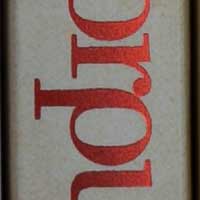 |
|
ISO 100 (100% Crop) |
ISO 100 (100% Crop) |
 |
 |
|
ISO 200 (100% Crop) |
ISO 200 (100% Crop) |
 |
 |
|
ISO 400 (100% Crop) |
ISO 400 (100% Crop) |
 |
 |
|
ISO 800 (100% Crop) |
ISO 800 (100% Crop) |
 |
 |
|
ISO 1600 (100% Crop) |
ISO 1600 (100% Crop) |
 |
 |
|
ISO 3200 (100% Crop) |
ISO 3200 (100% Crop) |
 |
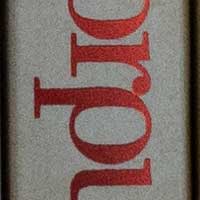 |
|
ISO 6400 (100% Crop) |
ISO 6400 (100% Crop) |
 |
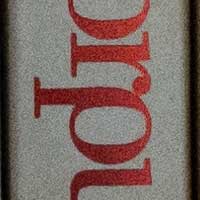 |
|
ISO 12800 (100% Crop) |
ISO 12800 (100% Crop) |
 |
 |
|
ISO 25600 (100% Crop) |
ISO 25600 (100% Crop) |
 |
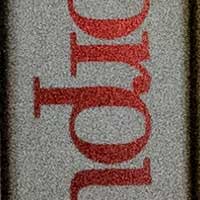 |
|
ISO 51200 (100% Crop) |
ISO 51200 (100% Crop) |
 |
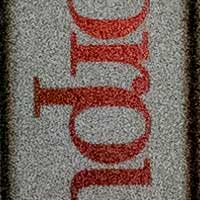 |
|
ISO 102400 (100% Crop) |
ISO 102400 (100% Crop) |
 |
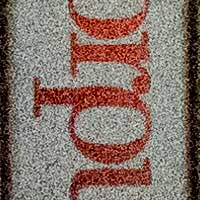 |
|
ISO 204800 (100% Crop) |
ISO 204800 (100% Crop) |
 |
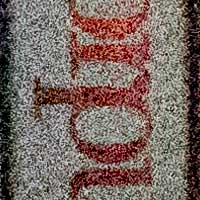 |
File Quality
The Canon EOS R3 has two different file quality options – Raw and JPEG. Here are some 100% crops which show the difference.
| JPEG (10.1Mb) (100% Crop) | RAW (24.7Mb) (100% Crop) |
 |
 |
Night
The Canon EOS R3’s maximum shutter speed is 30 seconds and there’s a Bulb mode for even longer exposures, which is excellent news if you’re seriously interested in low light photography.

HDR
The Canon EOS R3’s HDR Mode captures three different exposures and combines them into one, retaining more shadow and highlight detail, with an Auto mode, and three different strengths. There’s also a special HDR PQ mode which automatically records in the HEIF file format.
Multiple Exposure
The EOS R3’s multiple exposure mode allows you to take between two and nine images and merge them into a single photo in-camera.
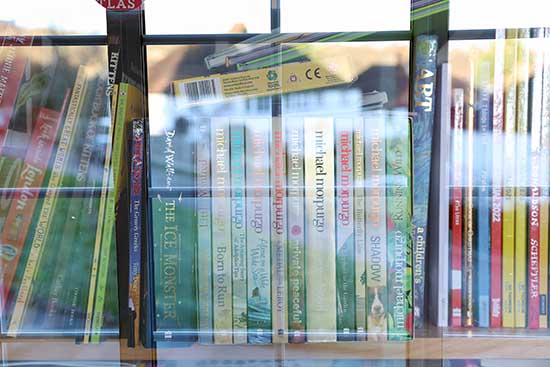
Picture Styles
Canon’s Picture Controls are preset combinations of different sharpness, contrast, saturation and colour tone settings. The EOS R3’s seven available Picture Controls are shown below in the following series, which demonstrates the differences. There are also three User Defined styes so that you can create your own particular look.
|
Standard |
 |
|
Portrait |
 |
|
Landscape |
 |
|
Fine Detail |
 |
|
Neutral |
 |
|
Faithful |
 |
|
Monochrome |
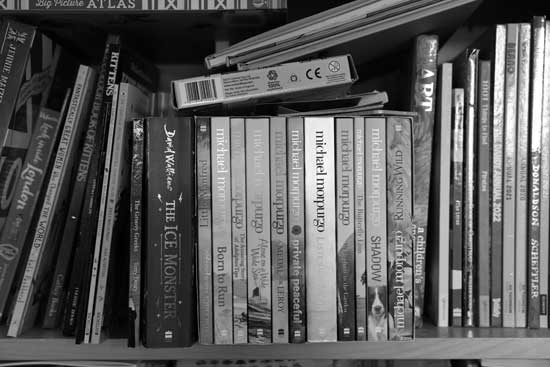 |
Sample Images
This is a selection of sample images from the Canon EOS R3 camera, which were all taken using the 24 megapixel JPEG setting. The thumbnails below link to the full-sized versions, which have not been altered in any way.
Sample RAW Images
The Canon EOS R3 enables users to capture RAW, PEG and HEIF format files. We’ve provided some Canon RAW (CR3) samples for you to download (thumbnail images shown below are not 100% representative).
Sample Movies & Video
This is a sample movie at the quality setting of 4096 x 2160 pixels at 50 frames per second. Please note that this 15 second movie is 1.7Gb in size.
This is a sample movie at the quality setting of 3840 x 2160 pixels at 50 frames per second. Please note that this 15 second movie is 425Mb in size.
This is a sample movie at the quality setting of 3840 x 2160 pixels at 25 frames per second. Please note that this 15 second movie is 223Mb in size.
This is a sample movie at the quality setting of 1920 x 1080 pixels at 50 frames per second. Please note that this 15 second movie is 111Mb in size.
Product Images

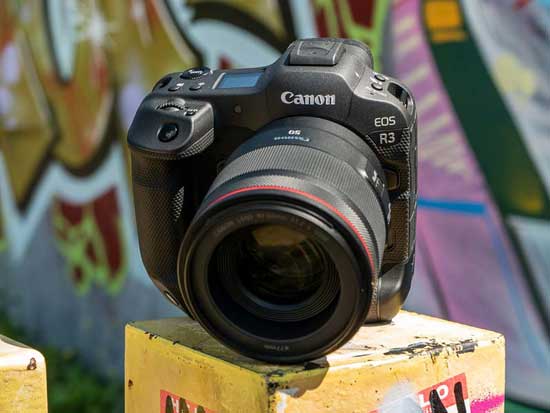
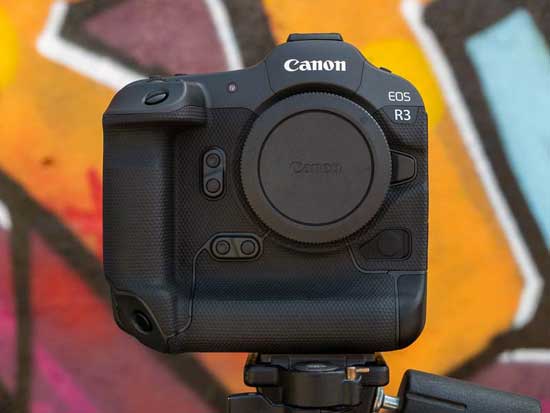
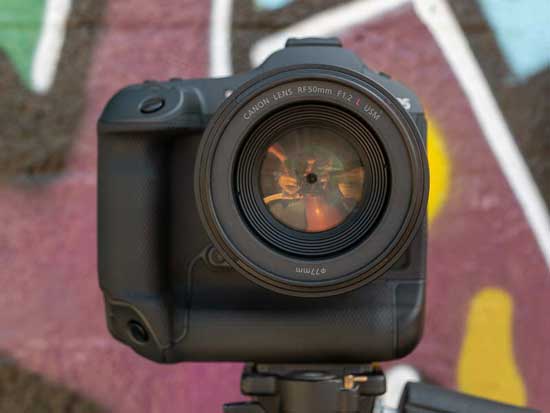
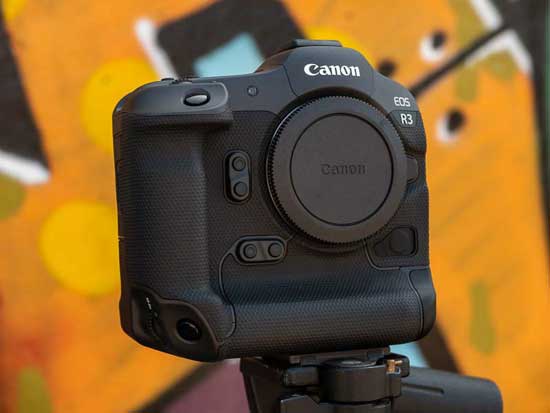

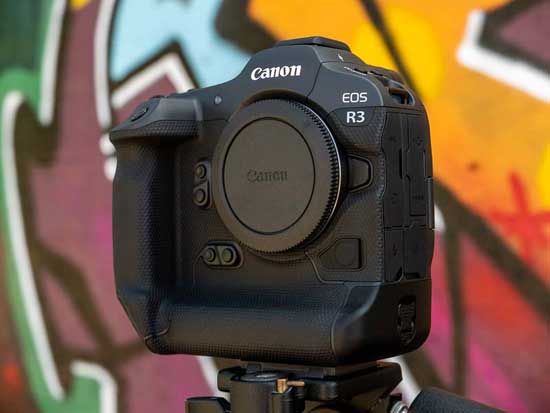

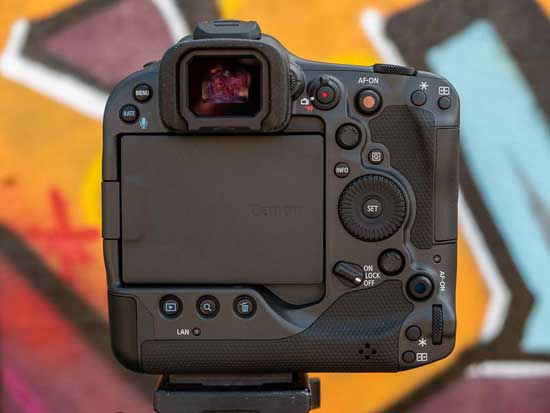

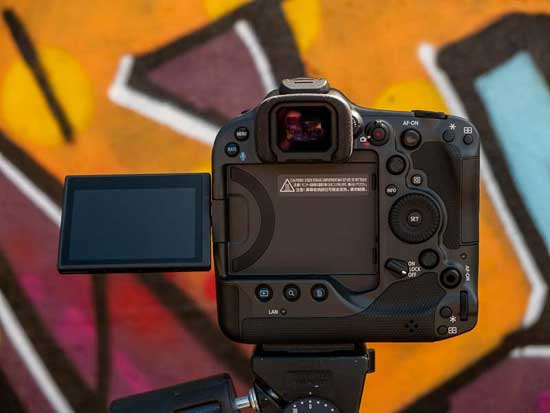
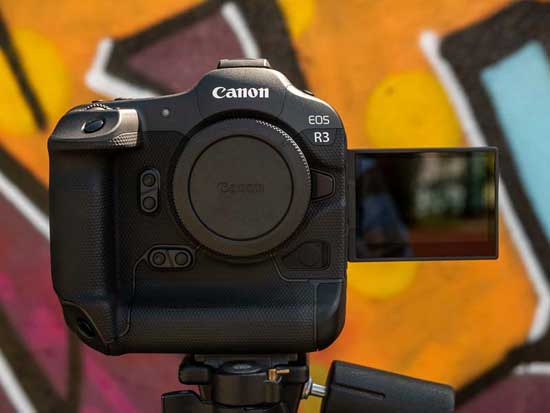


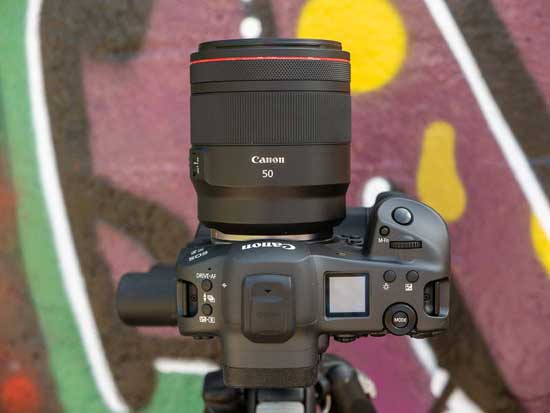
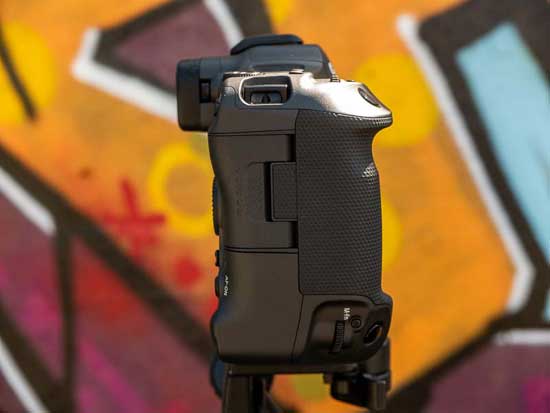

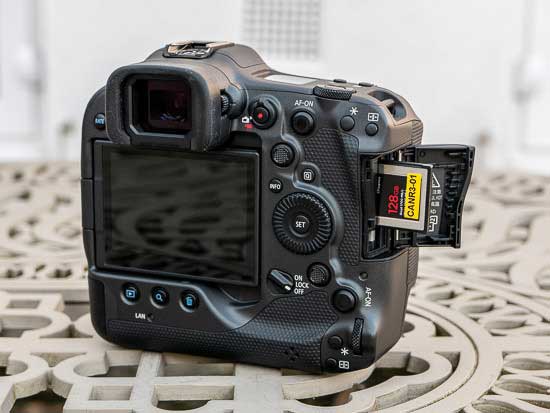
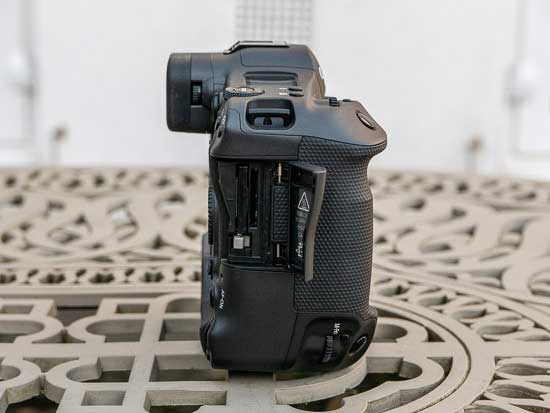
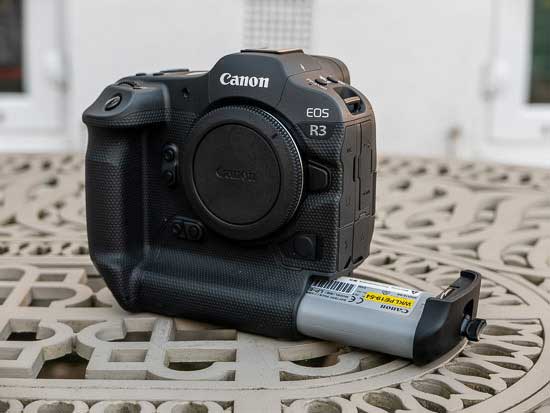
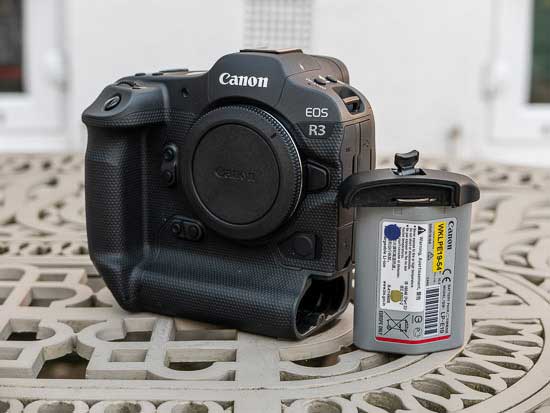
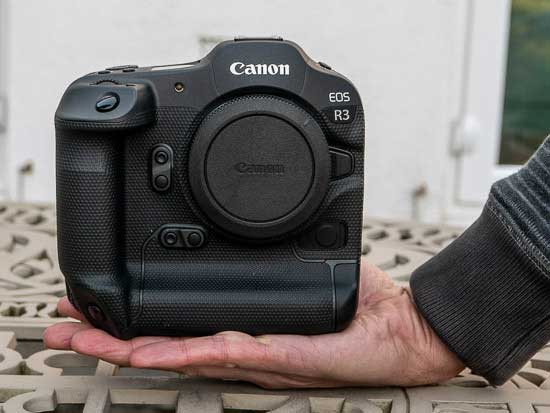

Conclusion
The new Canon EOS R3 combines the familiar blueprint of the 1D-X series with all the benefits of mirrorless to create a truly remarkable camera for professional sports and wildlife photographers and videographers alike.
Long revered as the pinnacle of Canon’s technological prowess, the EOS-1DX Mark III DSLR has now been surpassed by the EOS R3 as the company’s go-to camera for almost anything that moves quickly – people, animals, birds, vehicles – you name it and this camera can intuitively and almost instantly capture it with the absolute minimum of fuss.
Not only has the range of recognised subjects been expanded, but the way in which you can focus on them has been further improved with the addition of Eye Control AF, a feature that at first sounds like a gimmick but in practice soon becomes a seamless part of how you use the camera.
Other key advantages that the EOS R3 has over its DSLR sibling are the incredible hybrid image stabilisation worth up to 8-stops, superlative low-light AF sensitivity that stretches all the way down to -7.5EV, and the even faster headline-grabbing 30fps burst shooting, coupled with a completely silent electronic shutter.
This is all housed in a smaller, lighter yet still equally weather-proof and durable body that’s easier to use for extended periods of time.
There’s an awful lot to like about the EOS 3 and very little to grumble about. Sure, the integrated grip design certainly isn’t for everyone – at just over 1kg in weight it remains a camera for the professional rather than enthusiast, although we bet that many of the latter would enjoy using the R3, particularly if they routinely fit a battery grip to their current camera.
Some users will prefer a camera with more megapixels than the 24 offered by this camera, but Canon already have the 45 megapixel R5 model that’s already proved incredibly popular, especially as it also ups the ante on the video side of things with 8K recording.
The decision to specify mixed media memory card slots is a little mystifying on such an expensive, all action device – we’d have preferred the R3 to follow the EOS-1DX Mark III’s lead by using 2x CFexpress cards instead of the secondary UHS-II SD card slot.
Battery life is also greatly reduced when comparing these two flagship models, but that’s more a limitation of mirrorless versus DSLR rather than a direct criticism of the R3 itself.
The Sony A1 and the Nikon Z9 are the only other full-frame cameras that can shoot at 30fps, but the former is limited to shooting lossless compressed and the latter can only shoot JPEGs, leaving the R3 as the only model able to achieve 30fps with no limitations on the file format. On the other hand, the Alpha A1 and Z9 both offer a lot more resolution (50 and 45 megapixels respectively) than the EOS R3, and both can record 8K video too.
Eagle-eyed readers will surely have noticed by this point of our review that Canon’s new sports camera doesn’t actually inherit the 1-series moniker – that has seemingly been reserved by the upcoming EOS R1, which will presumably be a higher-resolution rival to the Z9 and Alpha 1.
Still, at the end of the day, it’s not all about specs, despite the often forensic internet focus on them. The new Canon EOS R3 is a compelling camera for action shooters, stills and video alike, which inherits the prestigious mantle of the 1D-X series and improves on it in many, often surprising ways…
| Ratings (out of 5) | |
|---|---|
| Design | 4.5 |
| Features | 5 |
| Ease-of-use | 4.5 |
| Image quality | 4.5 |
| Value for money | 4 |
Main Rivals
Listed below are some of the rivals of the Canon EOS R3.
The EOS-1D X Mark III is Canon’s flagship DSLR camera for sports and wildlife photographers. With a price tag of £6499 / $6499, does it have what it takes to outpace the likes of the Nikon D6 and the Sony A9 II? Read our Canon 1D X Mark III to review to find out…
The Nikon D6 is the 2020 update of Nikon’s flagship DSLR camera for professional sports, press and nature photographers. Is this the best DSLR that Nikon have ever made? Find out by reading our in-depth Nikon D6 review, complete with full-size sample photos and videos.
The Nikon Z9 has just been unveiled, a new flagship 35mm full-frame mirrorless camera that will sit above the Z7 II and Z6 II in Nikon’s Z-series range.
The Sony Alpha 1 camera, or Sony A1 for short, is the best camera that Sony have ever released, and currently the best all-round camera on the market. It’s also one of the most expensive, so read our in-depth Sony A1 review complete with full-size sample JPEG and Raw photos and movies to find out if it’s truly the One for you…
Review Roundup
Reviews of the Canon EOS R3 from around the web.
But what Canon didn’t have (and few other companies have either) is a high end pro sports mirrorless body with an integrated battery grip design. Canon has solved that with the release of the Canon EOS R3, a 1D style camera but with all of Canon’s latest mirrorless tricks…and a few new ones.
Read the full review »
Unboxing the Canon EOS R3 for the first time, I was struck by its size. Up until now, none of the big three camera manufacturers — Canon, Sony, and Nikon — have shipped a full-gripped mirrorless body. As a previous owner of the Canon 1D Mark IV and 1D X, it felt like going home. Even so, this EOS R3 is actually slimmer and much lighter than its current DSLR 1D X Mark III counterpart and weighs in at only 2.2 pounds with the battery installed.
Read the full review »
Specifications
Image Sensor
Image Processor
Lens
- Lens Mount
RF (EF and EF-S lenses can be attached using EF TO EOS R ADAPTER, EF TO EOS R ADAPTER WITH CONTROL RING, EF TO EOS R Drop in filter ADAPTER EF-M lenses not compatible)
- Focal Length
Equivalent to 1.0x the focal length of the lens with RF and EF lenses 1.6x with EF-S
Focusing
- Type
Dual Pixel CMOS AF II
- AF System / Points
With Area 100% horizontal and 100% vertical (Auto selection)
100% horizontal and 90% vertical (manual selection)2 - AF Working Range
EV -7.5 – 20 (at 23°C & ISO100)3
- AF Modes
One Shot
Servo AF
Automatic selection: 1053 Available AF areas when automatically selected
Manual selection: 1-point AF (AF frame size can be changed) 4779 AF positions available stills ( 3969 Movies) - AF Point Selection
Manual selection: AF point Expansion 4 points (up, down, left, right)
Manual selection: AF point Expansion surrounding
Manual selection: Flexible Zone AF 1-3 (all AF points divided into minimum 9 to 999 maximum focusing zones) - AF Tracking
Humans, Animals (Dogs, Cats and Birds) or Vehicles (Racing cars or Motor bikes)
- AF Lock
Locked when shutter button is pressed halfway or AF ON is pressed in One Shot AF mode. Using customised button set to AF stop in AI servo
- AF Assist Beam
Emitted by built in LED or optional dedicated Speedlite (flash)
- Manual Focus
Selected on lens
Exposure Control
- Metering Modes
Real-time with image sensor, 384-zone metering.
(1) Evaluative metering (linked to All AF points)
(2) Partial metering (Approx. 5.9% of viewfinder at centre)
(3) Spot metering: Centre spot metering (Approx. 2.9% viewfinder at centre) AF point-linked spot metering not provided
(4) Centre weighted average metering - Metering Brightness Range
EV -3 – 20 (at 23°C, ISO100, with evaluative metering)
- AE Lock
Auto: AE lock takes effect when focus is achieved
Manual: By AE lock button in P, Av, Fv, Tv and M modes - Exposure Compensation
+/-3 EV in 1/3 or 1/2 stop increments (can be combined with AEB)
- AEB
+/-3 EV in 1/3 or 1/2 stop increments
- Anti-flicker Shooting
Yes. Flicker detected at a frequency of 100 Hz or 120 Hz. Maximum continuous shooting speed may decrease available with both electronic and mechanical shutter
High Frequency anti flicker shooting for M and TV modes - ISO Sensitivity
OpenAuto 100-102400 (in 1/3-stop or whole stop increments)
ISO can be expanded to L:50, H1:2048004
Shutter
- Type
Electronically controlled focal-plane shutter and Electronic shutter function in sensor
- Speed
Mechanical: 30-1/8000 sec (1/2 or 1/3 stop increments), Bulb Electronic: 30-1/64000 (1/2 or 1/3 stop increments up to 1/16000 then 1 stop until 1/64000) (Total shutter speed range. Available range varies by shooting mode)
- Shutter Release
Soft touch electromagnetic release
White Balance
- Type
Auto white balance with the imaging sensor
AWB (Ambience priority/White priority), Daylight, Shade, Cloudy, Tungsten light, White Fluorescent light, Flash, Custom, Colour Temperature Setting - Settings
White balance compensation:
1. Blue/Amber +/-9
2. Magenta/Green +/-9 - Custom White Balance
Yes, 5 setting can be registered
+/-3 levels in single level increments - WB Bracketing
3, 2, 5 or 7 bracketed images per shutter release
Selectable Blue/Amber bias or Magenta/Green bias
Viewfinder
- Type
0.5- inch OLED colour EVF
- Dot Count
5.76 Million dots (1600×1200)
- Coverage (Vertical/Horizontal)
Approx. 100%
- Magnification
- Eyepoint
Approx. 23mm (from eyepiece lens centre)
- Dioptre Correction
-4 to +2 m-1 (dioptre)
- Display Performance
Power saving: 59.94 fps Smooth 119.98 fps
- Viewfinder Information
AF point information, Eye Control pointer, Exposure level indicator, Shooting mode, ISO speed, Shutter speed, Aperture, Number of remaining multiple exposures, Exposure compensation, HDR shooting, Highlight tone priority, Multiple-exposure shooting, Multi Shot Noise Reduction, Number of self-timer shooting, Digital Lens Optimizer, Maximum burst, AF method, Battery level, AF operation, Exposure simulation, Drive mode, AEB, Metering mode, FEB, Anti-flicker shooting, Still photo cropping, Aspect ratio, Auto Lighting Optimizer, AE lock, Picture Style, Flash-ready, White balance, Flash off, White balance correction, FE lock, Image Quality, High-speed sync, Bluetooth function, Wi-Fi function, Multi-function lock warning, Histogram, Electronic level, Lens information, focus distance scale, vertical exposure scale, Grid
- Depth of Field Preview
Yes, via customised button
LCD Monitor
- Type
8.01 cm (3.2″) Clear View LCD II, Approx. 4.15 million dots
- Coverage
Approx. 100%
- Viewing Angle (Horizontally/Vertically)
Approx. 170° vertically and horizontally
- Coating
Anti-smudge.
- Brightness Adjustment
Manual: Adjustable to one of seven levels
Colour Tone Adjustment: 4 settings - Touch Screen Operations
Capacitive method with menu functions, Quick Control settings, playback operations, and magnified display. AF point selection in still and Movies, touch shutter is possible in still photo shooting.
- Display Options
(1) Basic Camera settings
(2) Advance Camera settings
(3) Camera settings plus histogram and dual level display
(4) No info
(5) Quick Control Screen
(6) Display off
Flash
- Modes
E-TTL II Auto Flash, Metered Manual
- X-Sync
1/200sec mechanical shutter / 1/250th electronic 1st curtain, 1/180sec Electronic shutter
- Flash Exposure Compensation
+/- 3EV in 1/3 increments with EX series Speedlite flashes
- Flash Exposure Bracketing
Yes, with compatible External Flash
- Flash Exposure Lock
Yes
- Second Curtain Synchronisation
Yes, via Speedlite
- HotShoe / PC Terminal
Yes/Yes/Yes
- External Flash Compatibility
E-TTL II with EX series Speedlite, wireless multi-flash support
- External Flash Control
via camera menu screen
Shooting
- Modes
Stills; Flexible priority AE, Program AE, Shutter priority AE, Aperture priority AE, Manual, Bulb and Custom (x3)
Movie: Program AE, Shutter priority AE, Aperture priority AE, Manual, and Custom (x3) - Picture Styles
Auto, Standard, Portrait, Landscape, Fine Detail, Neutral, Faithful, Monochrome, User Defined (x3)
- Colour Space
sRGB and Adobe RGB
Highlight Tone Priority (2 settings)
Auto Lighting Optimizer (4 settings)
Long exposure noise reduction
Clarity
High ISO speed noise reduction (4 settings) (still and video)
Lens optical correction:
– Peripheral illumination correction, Chromatic aberration correction Distortion correction (during/after still photo shooting, during video only)
– Diffraction correction,
Digital Lens Optimizer (during/after still photo shooting) - Image Processing
Resize to M, S1, S2
Cropping: JPEG images can be cropped (Aspect ratios 3:2, 4:3, 16:9, 1:1)
Cropping of images
– Switch between vertical and horizontal cropping orientation
– Image straightening
– Cropping frame can be moved using touch screen operation
RAW image processing
Multiple exposure
HDR
HEIF to Jpeg conversion - Drive Modes
Single, Continuous High+, Continuous High, Continuous Low, Self-timer (2s+remote, 10s+remote)
- Continuous Shooting
Max. Approx. 12 fps. with Mechanical shutter/1st curtain electronic speed maintained for 1000+ JPEG or 1000 RAW images or 30 FPS with electronic shutter speed maintained for 540 JPEG or 150 RAW images6
- Interval Timer
Built in
File Type
- Still Image Type
RAW 14 bit: RAW and C-RAW (Canon original RAW 3rd edition)
JPEG 8 bit: 10 compression options
HEIF 10 bit: 10 compression options
Complies with Exif 2.31 and Design rule for Camera File system 2.0
Complies with Digital Print Order Format [DPOF] Version 1.1 - RAW+JPEG Simultaneous Recording
Yes, any combination of RAW + JPEG or RAW + HEIF possible,
RAW/ C-RAW:
3:2 ratio 6000×4000, 1.6x (crop) 3744×2496
JPEG/ HEIF: - Image Size
3:2 ratio (L) 6000×4000, (M) 3984×2656, (S1) 2976×1984, (S2) 2400×1600
1.6x (crop) (L) 3744×2496, (S2) 2400×1600
4:3 ratio (L) 5328×4000, (M) 3552×2664, (S1) 2656×1992, (S2) 2112×1600
16:9 ratio (L) 6000×3368, (M) 3984×2240, (S1) 2976×1680, (S2) 2400×1344
1:1 ratio (L) 4000×4000, (M) 2656×2656, (S1) 1984×1984, (S2) 1600×1600 - Folders
New folders can be manually created, named and selected
- File Numbering
(1) Consecutive numbering
(2) Auto-reset
(3) Manual reset - File Naming
2 User Presets
EOS Movie
- Movie Type
MP4 Video: 4K DCI/ UHD (17:9 / 16:9), Full HD (16:9)
4K/ Full HD: AVC/H.265 variable (average) bit rate, Audio: Linear PCM
4K/ Full HD: MPEG4 AVC/H.264 variable (average) bit rate, Audio: Linear PCM
6K RAW: 12-bit CRM Audio: Linear PCM - Movie Size
6K DCI (17:9) 6000 x 3164 (59.94, 50, 29.97, 25, 24, 23.98 fps) RAW
4K DCI (17:9) 4096 x 2160 (59.94, 50, 29.97, 25, 24, 23.98 fps) intra or inter frame / light inter frame
4K UHD (16:9) 3840 x 2160 (119.9, 100, 59.94, 50, 29.97, 25, 23.98 fps) intra or inter frame7
Full HD (16:9) 1920 x 1080 (119.9, 100, 59.94, 50, 29.97, 25, 23.98 fps) intra or inter frame
Full HD (16:9) 1920 x 1080 HDR (29.97, 25 fps) inter frame - Colour Sampling (Internal Recording)
6K RAW 12bit, 4K/ Full HD – YCbCr4:2:0 8-bit or YCbCr4:2:2 10bit
- Canon Log
Yes, Canon Log 3
- Movie Length
Max duration 6 hours. (excluding High Frame Rate movies). No 4 GB file limit with exFAT formatted card.8
- High Frame Rate Movie
MOV Video: 4K – DCI 4096×2160 / UHD 3840×2160/ Full HD 1920 x1080 at 100 fps or 119.9 fps9
Recorded as 1/4-speed slow motion movie - Frame Grab
8.8-megapixel JPEG still image frame grab from 4K DCI movie possible
8.3-megapixel JPEG still image frame grab from 4K UHD movie possible
(HEIF only possible when HDR PQ is set)10 - Bitrate / Mbps
CRM:
6K RAW (59.97p/50p): Approx. 2600 Mbps
6K RAW (29.97p/25.00p/): Approx. 2000 Mbps
6K RAW (24.00p/23.98p): Approx. 1600 Mbps
6K C-RAW (59.97p/50p): Approx. 1800 Mbps
6K C-RAW (29.97p/25.00p): Approx. 900 Mbps
6K C-RAW (24.00p/23.98p): Approx. 720 Mbps
MOV: MP4 H.264 Canon Log off:
4K DCI/UHD (119.9p / 100p): Approx. 1880 Mbps
4K DCI/UHD (59.94p/50.00p): ALL-I Approx. 940 Mbps
4K DCI/UHD (59.94p/50.00p): IPB Approx. 230 Mbps
4K DCI/UHD (59.94p/50.00p): IPB Light Approx. 120 Mbps
4K DCI/UHD (29.97p/25.00p/24.00p/23.98p): ALL-I Approx. 470 Mbps
4K DCI/UHD (29.97p/25.00p/24.00p/23.98p): IPB Approx. 120 Mbps
4K DCI/UHD (29.97p/25.00p/24.00p/23.98p): IPB Light Approx. 60 Mbps
Full HD (119.9p / 100p): Approx. 360 Mbps
Full HD (59.94p/50.00p): ALL-I Approx. 180 Mbps
Full HD (59.94p/50.00p): IPB Approx. 60 Mbps
Full HD (59.94p/50.00p): IPB light Approx. 35 Mbps
Full HD (29.97p/25.00p/24.00p/23.98p):ALL-I Approx. 90 Mbps
Full HD (29.97p/25.00p/24.00p/23.98p): IPB Approx. 30 Mbps
Full HD (29.97p/25.00p/24.00p/23.98p): IPB Light Approx. 12 Mbps
MOV: MP4 H.265 Canon Log on
4K DCI/UHD (119.9p / 100p): Approx. 1880 Mbps
4K DCI/UHD (59.94p/50.00p): ALL-I Approx. 1000 Mbps
4K DCI/UHD (59.94p/50.00p): IPB Approx. 340 Mbps
4K DCI/UHD (59.94p/50.00p): IPB Light Approx. 170 Mbps
4K DCI/UHD (29.97p/25.00p/24.00p/23.98p): ALL-I Approx. 470 Mbps
4K DCI/UHD (29.97p/25.00p/24.00p/23.98p): IPB Approx. 170 Mbps
4K DCI/UHD (29.97p/25.00p/24.00p/23.98p): IPB Light Approx. 85 Mbps
Full HD (119.9p / 100p): Approx. 470 Mbps
Full HD (59.94p/50.00p): ALL-I Approx. 230 Mbps
Full HD (59.94p/50.00p): IPB Approx. 90 Mbps
Full HD (59.94p/50.00p): IPB light Approx. 50 Mbps
Full HD (29.97p/25.00p/24.00p/23.98p):ALL-I Approx. 135 Mbps
Full HD (29.97p/25.00p/24.00p/23.98p): IPB Approx. 45 Mbps
Full HD (29.97p/25.00p/24.00p/23.98p): IPB Light Approx. 28 Mbps - Dual Card Recording
Yes
- Microphone
Built-in mono microphone (48 KHz, 16-bit x 2 channels)
- HDMI Display
Output to external monitor only (output of images and shooting information, images are recorded to the card) Camera screen and External Monitor output (Simultaneous recording to camera and external recorder, camera screen shows images with shooting information)
- HDMI Output
4K (DCI) 59.94p / 50.00p/29.97p /25.00p/24.00p/ 23.98p, 4K (UHD) 59.94p / 50.00p/ 29.97p / 25.00p / 23.98p, Full HD 59.94p / 59.94i, 50.00p / 50.00i 480p 59.94p 576p 50p Uncompressed YCbCr 4:2:2, 8-bit or 10-bit, sound output via HDMI is also possible
- Focusing
Dual Pixel CMOS AF II with Eye/Face Detection and Tracking AF (people, animals and vechiles) , Movie Servo AF
- ISO
Manual Focus
Auto: 100-25600, H: up to 102400
Manual: 100-25600, H: up to 102400.
Other Features
- Metadata Tag
User copyright information (can be set in camera)
Image rating (0-5 stars)
IPTC data (registered with EOS Utility)
IPTC data (via MFT app)
Image transfer with caption (Caption registered with EOS Utility) - LCD Panel / Illumination
Yes/Yes
- Water/Dust Resistance
- Voice Memo
Yes
- Intelligent Orientation Sensor
Yes
- Playback Zoom
1.5x – 10x in 15 steps
- Display Formats
(1) Single image
(2) Single image with information (2 levels)
Basic – Shooting information (shutter speed, aperture, ISO and Image quality)
Detailed – Shooting information (shutter speed, aperture, ISO, metering Image, quality and file size), Lens information,
Brightness and RGB histogram, White balance, Picture Style, Color space and noise reduction, Lens optical correction, GPS information, IPTC information
(3) 4 image index
(4) 9 image index
(5) 36 image index
(6) 100 image index
(7) Jump Display (1, 10 or 100 images, start of burst sequence Date, Folder, Movies, Stills, Protected images, Rating)
(8) Movie edit
(9) RAW processing
(10) Rating - SlideShow
Image selection: All images, by Date, by Folder, Movies, Stills, Protected images or Rating
Playback time: 1/2/3/5/10 or 20 seconds
Repeat: On/Off - Histogram
Brightness: Yes
RGB: Yes - Highlight Alert
Yes
- Image Erase
Single image, select range, Selected images, Folder, Card
- Image Erase Protection
Erase protection of Single image, Folder or Card all found images (only during image search)
- Self Timer
2 or 10 sec.
- Menu Categories
(1) Shooting menu
(2) AF Menu
(3) Playback menu
(4) Network
(5) Setup menu
(6) Custom Functions menu
(7) My Menu - Menu Languages
29 Languages
English, German, French, Dutch, Danish, Portuguese, Finnish, Italian, Norwegian, Swedish, Spanish, Greek, Russian, Polish, Czech, Hungarian, Vietnamese, Hindi, Romanian, Ukrainian, Turkish, Arabic, Thai, Simplified Chinese, Traditional Chinese, Korean, Malay, Indonesia and Japanese - Firmware Update
Update possible by the user (Camera, Lens, External Speedlite, BLE remote control, Lens adapter)
Interface
- Computer
SuperSpeed USB 3.2 Gen 2 USB C connector
- Wi-Fi
Wireless LAN (IEEE802.11a/b/g/n/AC) (5 GHz /2.4 GHz)12, with Bluetooth 5.0 support Features supported – EOS Utility, Smartphone, Upload to image.canon, Wireless printing
- Other
HDMI mini out (Type D, HDMI-CEC compatible), External Microphone In/Line In (Stereo mini jack), Headphone socket (Stereo mini jack), N3-type terminal (remote control terminal)
Direct Print
Storage
Supported Operating System
- PC
Windows 8.1 and Windows 10 (tablet mode not supported)
- Macintosh
OS X v10.12, 10.13, 10.14, 10.15. OS 11
Software
- Image Processing
Digital Photo Professional 4.15 or later Digital Photo Professional Express mobile app (iOS only)
- Other
EOS Utility 3 (incl. Remote Capture), Picture Style Editor, WFT Utility, EOS Lens Registration Tool, EOS Web Service Registration Tool, Canon Camera connect app (iOS/Android), Mobile File Transfer app (iOS/Android),
Power Source
- Batteries
Rechargeable Li-ion Battery LP-E19 (supplied)
- Battery Life
With LCD Approx.860 shots (at 23°C)
With Viewfinder Approx. 620 shots (at 23°C)13 - Battery Indicator
6 levels + percentage
- Power Saving
Power turns off after 15 seconds, 30 seconds, 1, 3, 5, 10 or 30 mins
- Power Supply & Battery Chargers
Battery charger LC-E19E (supplied), AC Adapter AC-E19 and DC Coupler DR-E19, PD-E1 USB power adapter
Accessories
- Wireless File Transmitter
None
- Lenses
All RF lenses (EF & EF-S via Lens adapters)
- Lens Adapters
EF TO EOS R ADAPTER, EF TO EOS R ADAPTER WITH CONTROL RING, EF TO EOS R Drop in filter ADAPTER
- Flash
Canon Speedlite (EL-1*, EL-100, 90EX, 220EX, 270EX, 270EX II, 320EX, 380EX, 420EX, 430EX, 430EX II, 430EX III 470EX-AI, 550EX, 580EX*, 580EX II*, 600EX*, 600EX-RT*, 600EX-II-RT*, Macro-Ring-Lite MR-14EX, Macro Ring Lite MR-14EX II, Macro Twin Lite MT-24EX, Macro Twin Lite MT-26EX Speedlite Transmitter ST-E2, Speedlite Transmitter ST-E3-RT*, Speedlite Transmitter ST-E3-RT V2*, Speedlite Transmitter ST- E10)
*Must use Multi-Function Shoe Adapter AD- E1 to retain weather sealing
- Remote Controller / Switch
Remote control with N3 type socket, Speedlite 600EX-II-RT. Speedlite EL-1 and BR-E1 Bluetooth remote
- Other
Eyecup ER-h, Eyecup ER-hE, Multi-Function Shoe Adapter AD-E1, Multi-Function Shoe Directional Stereo Microphone DM-E1D, Multi-Function Shoe Adapter for Smartphone Link AD-P1 for Android, Stereo Microphone DM-E1 / DM-E100
Physical Specifications
- Body Materials
Magnesium Alloy body and polycarbonate with glass fibre
- Operating Environment
0 – 40 °C, 85% or less humidity
- Dimensions (W x H x D)
150x 142.6 x 87.2mm
- Weight (Body Only)
Approx. 822 g (1015g with card and battery)
News
Canon have revealed their answer to the Sony Alpha 1 and the Nikon Z9 in the shape of the new EOS R3 full-frame mirrorless camera.
The Canon R3 will feature a brand new, Canon-developed 24.1 megapixel back illuminated stacked CMOS sensor, DIGIC X imaging processor, 6K/60p RAW video recording and oversampled 4K/120p video for up to six hours of regular video, 30fps burst shooting with full AF/AE tracking, and an integrated grip design with professional levels of weather-proofing.
The EOS R3 features Canon’s most advanced autofocusing system ever, with Auto Focus (AF) tracking for motorsports including racing cars and motorbikes, focusing in extreme darkness at light levels down to -7EV, and an innovative new autofocus Eye Control Function.
There’s also a 5.76 million dot electronic viewfinder with 120fps refresh rate, 5-axis IBIS providing up to 8-stops of protection against camera shake, and a fully articulating 4.1-million dot touch-screen display, and compatibility with Canon’s Mobile File Transfer smartphone app.
The Canon EOS R3 is priced at £5,879.99 / €6,689.99 / $5,999.00 and it will be available in November 2021.
Canon UK Press Release 14/09/2021
The wait is over – Canon’s new sports hero is here to outpace and outperform
London, United Kingdom, 14th September 2021 – Canon Europe today announces the highly anticipated EOS R3 – a powerhouse for sports photography and reportage. Blending tradition with cutting edge technology, the EOS R3 offers all the familiarity and speed of Canon’s renowned EOS-1 series, with the innovation and versatility of the pioneering EOS R System.
Designed using feedback from the most demanding professional press and sports photographers, the EOS R3 features over 100 improvements upon Canon’s mirrorless and DSLR models. The result is a camera which dramatically streamlines workflows and takes the connection between camera and photographer to new levels, for unbeatable speed and responsiveness. With a brand new, innovative 24.1 megapixel sensor, the EOS R3 gives the optimal balance of performance, resolution and speed to offer news and sports photographers a camera to outperform and outpace the competition.
The future is fast
Leveraging the ground-breaking new 24.1 megapixel backside illuminated stacked CMOS sensor, the EOS R3 offers lightning fast image capture and enhanced responsiveness. The powerful sensor almost entirely eliminates rolling shutter distortion and with a rapid shutter speed, offering a range of 30 seconds to 1/64000th of a second, it helps sports photographers freeze the fastest of subjects. When using the electronic shutter, photographers can shoot up to 30fps with AE and AF tracking even when shooting RAW files, as well as options for shooting at 15fps and 3fps. The electronic shutter can also be used with both Canon and third-party flashes for the first time. Removing the traditional weaknesses of electronic shutters, Canon has introduced Flicker detection and a High Frequency anti-flicker shooting mode to detect and correct flickering light sources and prevent banding or colour and exposure issues.
The EOS R3’s high speed performance does not stop at the frames per second, it extends to the focusing as well. Capable of focusing in 0.03 seconds, the EOS R3 is the fastest EOS R series camera yet – perfect for capturing the unpredictable action of sport and reportage. Powered by Dual Pixel CMOS AF II, the EOS R3 features an improved Deep Learning algorithm, offering AF tracking including human and animal eye, body, and face detection as well as head detection for humans in both stills and videos. Designed with motorsports photographers in mind, Canon has also introduced a vehicle tracking function, to expertly track motorbikes, open cockpit Formula cars as well as GT and rally cars – with the ability to prioritise the vehicle or the driver’s helmet. Eye, face, head and body detection are now available in all AF modes, as well as a new Flexible Zone allowing users to select the size and shape of the Zone AF area. The EOS R3 sets a new standard for its ability to focus in lighting conditions as low as -7.5 EV – making this one of the most capable low light cameras available.
To maximise control over all these AF options the EOS R3 offers three different ways to select the AF points: the quick smart controller, the precise multi controller and the instinctive Eye Control AF. Eye control AF provides a more natural connection between the camera and the photographer. This intuitive and pioneering AF point selection method moves the focus point to where the photographer looks. In situations where the story can quickly unfold, this allows photographers to instinctively focus on the action with just a look.
Enhancing the ability for handheld shooting and steady movie production on the move, the 5-axis In-Body Image Stabilizer can combine with optical Image Stabilizer in selected RF lenses and offers industry-leading performance with up to 8-stops.
Outpace your peers
For professional photographers shooting in the field, it’s not just about the speed of capturing a moment but also the speed of getting it to the news desks and editors that matters. With a number of professional connectivity options including built in version 5.0 Bluetooth and 5 GHz Wi-Fi, the EOS R3 streamlines workflows and simplifies the connection to a smartphone or Wi-Fi network. Ideal for sport arenas, the built in Gigabit Ethernet port enables a high speed wired connection. And, for when speed really matters, photographers can transmit images to clients via FTP. For existing EOS R5 and EOS-1D X Mark III users, network settings can be shared between the three cameras.
Users can remotely control the camera from a mobile device using the Canon’s Camera Connect App or using the Browser Remote function via an ethernet connection. A popular feature from the EOS-1D X Mark III, the Browser Remote function also enables users and head offices to remotely change metadata, browse and download images. Users will also be able to use Canon’s Mobile File Transfer (MFT) app – a mobile application for professional photographers that transfers images over a mobile device to an FTP/FTPS/SFTP server. Future enhancements of the app will include text conversion of voice memo, enhancing ease of use for professionals. A new smartphone holder accessory for the EOS R3, the Smartphone Link AD-P1, allows users to mount their iOS or Android device on top of the Multi-Function Shoe Adapter and easily transmit images via the new MFT app . The Canon Camera Connect app now enables the EOS R3 firmware to be updated via your phone – a first for an EOS camera.
Incredible video capabilities
As with the EOS R5, the EOS R3 takes Canon’s hybrid offering to the next level – meeting the demand for photographers to capture the action in both high-quality stills, and impressive high-resolution video. It offers powerful video capability, capturing 6K 60p RAW resolution footage, which offers 50 per cent more detail than 4K. With 6K CRM RAW files, exposure and white balance can be corrected post capture to ensure stunning image reproduction. 4K footage up to 60p is oversampled from 6K guaranteeing the highest possible 4K movie quality. Great for high speed and dynamic sports, the EOS R3 captures 4K 120p footage for stunning 4K resolution slow motion. It’s now possible to record up to six hours of regular video or 1.5 hours at high 119.88/100p frame rates.
At its core, the EOS R3 is designed to help photographers outpace their competitors – and the same is true for video. To reduce the file size and speed up video workflows, CRM light or MP4 footage can be recorded in All-I, IPB or the smaller IPB light option, allowing users to select from a range of bit rates to meet their needs and storage requirements. Dual card slots, including a UHS-II SD card slot and the ultra-high speed CFexpress make shooting 6K RAW video possible and support simultaneous recording to both cards in MP4 , providing a fail-safe back up of vital footage. Canon’s renowned Canon LOG 3 enables 10-bit internal recording, to achieve a greater dynamic range or 10bit HDR PQ which minimises the need for editing or grading footage in post-production. Excellent for roving reporters, the EOS R3 features Canon’s new Multi-Function Shoe and is compatible with the newly launched Directional Stereo Microphone DM-E1D – a camera-powered directional stereo microphone using digital processing – and the TEAC Tascam CA-XLR2d-C XLR adapter which enables two channel recording with professional XLR microphones.
Instinctive shooting experience
Offering all the speed and familiarity of the EOS-1 series, Canon’s latest mirrorless employs a new Canon developed blackout-free, high-quality 5.76 million dot electronic viewfinder with low lag and refresh rate of up to 120 fps at full resolution for a viewing experience that rivals an optical viewfinder. Along with the newly introduced OVF simulation View Assist, the viewfinder offers richer tones and greater dynamic range. The shutter lag can be reduced to an astonishing 20ms – less than half that of a conventional camera, for near instant capture when the shutter release is pressed. The new high resolution Vari-Angle 4.1-million dot touch screen provides more detail than ever before and offers greater flexibility of shooting angles thanks to its ability to tilt and rotate into a range of positions. Combining existing EOS ergonomics with new controls and a number of new customisation options for users, including shutter sounds with volume control, the EOS R3 provides familiar, yet advanced control. To save time when moving between camera bodies, photographers can easily copy and save personalised settings to memory cards. Using the same LP-E19 battery as the EOS-1D X Mark II and EOS-1D X Mark III, the EOS R3 enables extended shooting and greater compatibility with existing DSLRs.
The EOS R3 employs a new lightweight, dust and water-resistant magnesium body for use in harsh conditions. Weather resistance can be also maintained when using existing Speedlites, by connecting them to the newly announced Multi-Function Shoe Adapter AD-E1. The EOS R3 also powers the new, compact Speedlite Transmitter ST-E10 through the Multi-Function Shoe, which gives photographers the ability to remotely control multiple radio Speedlites.
The EOS R3 is an ultra-fast, highly responsive camera that gives sports and news photographers the competitive advantage they need to get the winning shot.
Pricing
The EOS R3 will retail at: £5,879.99 / €6,689.99 incl. VAT
Canon EOS R3 Key Features
• New Canon-developed 24.1 megapixel back illuminated stacked CMOS sensor
• 30fps with AF/AE tracking
• Shutter speed offering a range of 30 seconds to 1/64000 of a second when using the electronic shutter
• Eye Control AF point selection
• AF tracking of people, animals (including birds) and motorsports (racing motorbikes and racing cars)
• Full width 6K 60p RAW video recorded internally to a CFexpress card
• Focus in light levels as low as –7.5 EV
Canon UK Press Release 02/06/2021
AF tracking for racing cars and motorbikes – more details of Canon’s EOS R3 revealed – a high-speed, high-performance mirrorless
London, United Kingdom, 2nd June 2021 – Following Canon Inc.’s initial development announcement of the EOS R3 – its latest high-performance, high-speed professional mirrorless camera – more details have been revealed today confirming it marks a new era for sports, wildlife and news photographers.
Canon is committed to achieving the impossible, and this camera is no exception. Today, new specs prove the EOS R3 takes object-tracking to another level – adding Auto Focus (AF) tracking for motorsports including racing cars and motorbikes. In addition to this, ideal for filmmakers, the EOS R3 can record oversampled 4K video.
The EOS R3 combines the next-level performance and image quality advantages of Canon’s innovative EOS R System line-up. Pairing its RF Mount with Canon’s RF lenses, the EOS R3 offers possibilities unseen in any other camera/lens duo and opens the door to previously unattainable capabilities and unseen optical excellence. As a result, professional photographers – whether shooting sports, wildlife, or news – can capture fleeting moments in time, in ways they never thought possible.
Following the April development announcement, here’s some of the freshly revealed EOS R3 specs to be aware of:
Capture fast-moving subjects in pin-sharp focus, with ease
Professionals following moving objects around the frame will enjoy the EOS R3’s ability to keep them in pin-sharp focus – even when shooting RAW at 30fps – thanks to Canon’s Dual Pixel CMOS AF technology. Alongside the people and animal (including birds) AF tracking technology found in the EOS R5 and EOS R6, the EOS R3 is perfect for motorsports photographers – with its ability to track racing cars and motorbikes. And when light conditions get tough, the camera can focus in extreme darkness at light levels -7EV or lower.
Supporting Canon’s unique Eye Control AF technology, which enables professionals to select the AF point with only their eye, the EOS R3 is an extension of any photographers’ creativity – reacting quickly in the moment to capture the shot. In low light, the EOS R3 offers up to 8-stops of protection against camera shake with Canon’s revolutionary combined Image Stabilizer (IS) technology. The camera’s sensor-shift IS works in tandem with the optical IS built into many RF Mount lenses, for a result that lets professionals shoot handheld in very dim light or while using long shutter speeds to intentionally blur movement.
High-quality RAW at 30fps
At the heart of the EOS R3 lies a brand-new back illuminated stacked CMOS sensor, working together with Canon’s high-performance DIGIC X image processor. Today, Canon can confirm it will capture quality RAW files at a staggering 30fps with full AF/AE tracking. The breath-taking speed of the camera’s new sensor also redefines what can be done with an electronic shutter. Flash sync is now possible with the electronic shutter when used with external Speedlites, and rolling shutter distortion when shooting fast-moving subjects has been reduced.
Oversampled 4K and RAW recording abilities
In addition to its next-level still photography capabilities, the EOS R3 is suited to those looking to capture high-quality video. The camera will record oversampled 4K, or users can record RAW footage internally. Canon Log 3 is also available to provide professionals with greater dynamic range and colour grading possibilities. Crucially, the same object recognition available to stills photographers is also available to videographers, so filmmakers can track fast-moving objects around the frame, keeping them in sharp focus.
Built for professionals
Built to withstand the rigours of day-to-day professional use, the EOS R3 will have a tough, magnesium-alloy body featuring dust and water resistance to the same level as Canon’s legendary EOS-1D X series – ensuring it can cope in the toughest weather conditions. Dual card slots allow image files to be written to SD or CFexpress memory cards. The camera is powered by a high-capacity LP-E19 battery – the same as the one found in Canon’s EOS-1D X Mark III cameras – enabling professionals to use and share batteries between cameras that they may already have in their kitbag. The camera will also offer a choice of controls with both multi controller and smart controller – for completely intuitive operation. Offering three customisable dials on the body, plus a Lens Control ring on each RF Mount lens, this allows shutter speed, aperture, ISO, and exposure compensation all to be easily adjusted while the camera is at the photographer’s eye. The EOS R3 is also equipped with a Vari-Angle screen letting professionals compose easily from creative perspectives.
Advanced connectivity
As a camera intended for leading sports and news shooters – connectivity is vital. Offering a built in Wired LAN socket and 5GHz Wi-Fi allowing communication with computer networks, laptops and mobile devices, professionals can share images quickly and easily. As previously announced, the EOS R3 is also compatible with the Canon Mobile File Transfer app. What’s more, the EOS R3 will feature a new accessory shoe which provides data communication and power for new accessories when attached to the camera.
EOS R3 key features announced as of today (2nd June 2021) are:
- New Canon-developed back illuminated stacked CMOS sensor
- 30fps with AF/AE tracking
- AF tracking of people, animals (including birds) and motorsports (racing motorbikes and racing cars)
- Can record oversampled 4K, or RAW footage internally and Canon Log 3
- Eye Control AF point selection
- Focus in light levels -7EV or loweri
- Dual Pixel CMOS AF
- EOS-1D series dust and water resistance
Canon UK Press Release 14/04/2021
Ultra-fast, and responsive – first details of EOS R3 revealed, Canon’s latest professional mirrorless for sports and news
Today, with the news of three new innovative RF lens and a new file sharing app, Canon Inc. announces the development of EOS R3 – its latest high-speed and ultra-responsive professional mirrorless camera. With its ground-breaking design, the camera will empower professional sports and news photographers to meet challenging demands – to outpace and outperform. Boasting qualities seen in Canon’s DSLR and mirrorless bodies, the EOS R3 truly is a hybrid, next generation camera for the sports and news photographers of today and tomorrow.
The EOS R3 features a new Canon-developed BSI stacked CMOS sensor, a powerful DIGIC X imaging processor, shooting capabilities of 30fps with AF/AE tracking, eye, head and body detection and a pioneering new autofocus Eye Control Function. It is the ideal camera for action photographers looking for quality images, both still and moving, of objects travelling at intense speeds.
Built on the revolutionary EOS R System, with its unparalleled RF Mount and paired with one of Canon’s innovative RF lenses, the camera offers capabilities unseen in any other camera/lens duo. With lenses like the today launched RF 400mm F2.8L IS USM and RF 600mm F4L IS USM, professionals can achieve unrivalled optical excellence and performance.
Here’s five things you need to know about the new EOS R3:
High quality, at high speed
The EOS R3 is the first EOS series camera to feature an entirely new 35mm back illuminated stacked CMOS sensor – developed by Canon. Combined with the power of its DIGIC X imaging processor, professionals using EOS R3 will achieve next-level, high-speed photography and filmmaking. Using the camera, they can enjoy 30fps with AF/AE tracking with minimal image distortion when using the electronic shutter – perfect for the likes of professional sports photographers challenged with capturing action within a fraction of a second.
Impressive tracking of fast-moving action
Professionals can push creative boundaries with pin-sharp accurate tracking and focus on fast-moving action. The EOS R3’s next generation Dual Pixel CMOS AF can track subjects’ eyes, heads and bodies travelling at speed – excellent for capturing even the finest of details in a split second. What’s more, Canon reveals it will add a new subject (yet to be disclosed) to the camera’s AF tracking.
AF control – with your eye!
The EOS R3 will feature new and improved technology first seen in Canon’s EOS 5. It is the first EOS digital camera to provide a new generation of photographers with ground-breaking Eye Control Function, which enables users to simply select and move the AF point using their eye via the viewfinder. This instinctive feature offers professionals natural and speedy control over AF. Reducing the time to focus, which is usually done with a multi-controller/button, this feature is again perfect for photographers looking to capture the most important subject for their frame at speed – whether that’s during a news conference or photographing a team sport.
Professional build
Inspired by the EOS-1D series, the EOS R3 body allows for ultra-intuitive control in the most demanding professional situations. Professionals can expect the same durability and dust and water resistance as provided in Canon’s legendary EOS-1 series bodies. The camera also has the integrated grip that EOS-1D series users love and trust. With EOS R3, professionals have the confidence to keep on shooting – whatever the conditions – whether they are pitch side or poolside, inside or outside, in snow or sunshine.
Fast connection – introducing Canon’s new Mobile File Transfer
The EOS R3 will be fully compatible with Canon’s Mobile File Transfer smartphone app. This provides a new way to transfer images and speed up workflow whilst on the move, using mobile network services and without the need for wired LAN equipment.
Canon is launching Version 1.2 of its Mobile File Transfer for iOS via the Apple App Store in June, which is compatible with Canon’s EOS-1D X Mark III, EOS R5 and EOS R6. Android support will be added in the future.
Today, Canon also announces the RF 100mm F2.8L MACRO IS USM – an impressive macro and portraiture lens which is the world’s first AF macro lens with 1.4x close up magnification . In addition to this Canon also revealed details of a the new RF 400mm F2.8L IS USM and RF 600mm F4L IS USM, two telephoto prime lenses designed to meet the demands for sports and wildlife professionals, with incredible focal lengths and capabilities, especially when paired with EOS R3.
Key Features
Initial EOS R3 key features announced today (14th April 2021) are:
- New Canon-developed stacked BSI CMOS sensor
- 30fps with AF/AE tracking
- Eye Control Function
- Subject eye and head detection
- Dual Pixel CMOS AF
- 1D series weather resistance
Canon USA Press Release
“The development of the Canon EOS R3 and the launch of the new RF lenses are the latest testament to the company’s commitment to professional still and video image and content creators,” said Tatsuro “Tony” Kano, executive vice president and general manager of Canon U.S.A.’s Imaging Technologies & Communications Group. “When the camera becomes available, it will pair well with each of the new RF lenses announced today. Canon is excited to share this news today, and we look forward to seeing the images captured with the new RF lenses and upcoming EOS R3.”
The Canon EOS R3 will join the current lineup of EOS R full-frame mirrorless series cameras. This camera will usher in a new category to the EOS R system, positioned squarely between the EOS R5 and EOS-1D X Mark III cameras. The camera will put great emphasis on superb AF performance and speed, with fast-moving subjects. It is being designed to meet the reliability and durability demands of professionals, even when working in challenging conditions.
At the heart of the EOS R3 camera’s performance will be an EOS camera first, a Canon-developed, full-frame stacked CMOS sensor with a back-illuminated design, providing substantially faster read-out speeds during still-imaging recording. This completely new sensor is designed to produce less “rolling shutter” distortion during Electronic Shutter operation and offer continuous Electronic Shutter still-image shooting at speeds up to 30 fps — with full Dual Pixel CMOS AF and auto exposure1.
The AF system will leverage technology and performance from the well-received EOS R5 and EOS R6 cameras, using Deep Learning technology to further enhance eye and body detection for even better performance during portrait and action-type shooting. In addition, the EOS R3’s subject detection AF will offer new recognizable subjects for its AF system, bolstering its focusing capabilities during challenging shooting conditions.
The Electronic Viewfinder of the EOS R3 will offer photographers the ability to select the initial area for AF tracking by simply looking directly at the viewfinder location where they want to begin AF. With Eye Control AF2 and Servo AF activated, the camera will focus on and track moving subjects at that location in the frame. When Face Detect + Tracking is active, the camera will continue to follow moving subjects around the entire active AF area.
The camera body will be entirely new and accentuates the camera’s high-performance design. It’s a one-piece design, integrating the body with a vertical grip section. The weather and dust-resistance will be equivalent to that of EOS-1D class cameras — an essential consideration for nature, wildlife, sports and photojournalism content creators working in extreme conditions. In addition, news photojournalists will be excited to add the Mobile File Transmitter application for iOS and Android devices that will be available.
Image Gallery
Click on a thumbnail to see the full version.
Hands On
Are you excited about the upcoming Canon EOS R3 full frame mirrorless camera? Do you want to see some actual up close and personal shots of a real life model, rather than just Canon’s official rendered product images?
Then you’ve come to the right place, as last week I was given an exclusive one-to-one briefing by Canon and had the chance to shoot an extensive gallery of hands-on photos of the R3.
As this is still an early tech announcement, though, to be more precise they were strictly hands-off photos, as I wasn’t allowed to actually touch the camera, turn it on, open any of the ports or compartments, or see the bottom of it.
Canon’s Product Intelligence Consultant, David Parry, was also under strict orders not to divulge any additional information about the EOS R3 other than what has already been revealed in the previous two press releases that Canon have issued. So I’m afraid I don’t have any more information for you about the megapixel count of the sensor, for example, or whether it will be able to record 8K or just 4K video.
Canon did a similar thing for the EOS R5 camera in 2020, where they showed me an early pre-production model well ahead of the official launch that turned out to be virtually identical to the finished article. So if they follow the same plan for the R3, the photos that you see here will be almost 100% the same as the actual camera that will be available to buy later in 2021.
So without further ado, here is our extensive gallery of hands-on photos of the exciting new Canon EOS R3 full-frame mirrorless camera.
Please note that if you would like to re-publish any of the images included in this Canon EOS R3 Hands-on Photos article, you may only use up to 5 images without prior permission. Please also include a link back to the original article. Thank you.
Image Gallery
Click on a thumbnail to see the full version.
Your Comments









